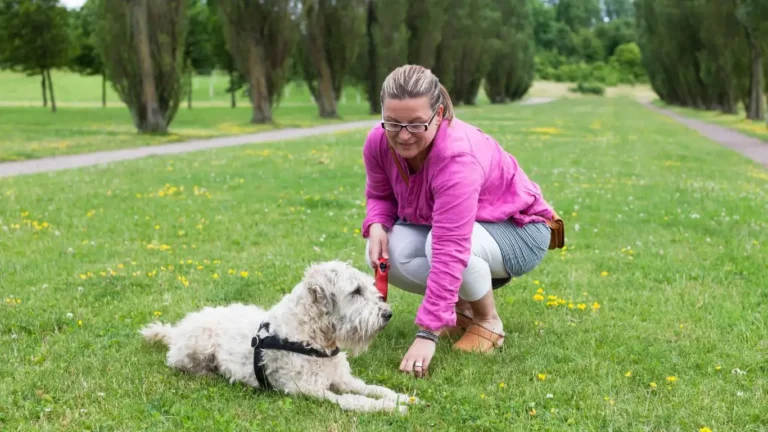How to Stop a Dog from Barking Out the Window Fast and Easy
If you’ve ever caught your dog barking non-stop at the window, you know how frustrating—and honestly exhausting—it can be. As a Veterinary Technician specializing in nutrition, I’ve spent countless hours helping pet parents understand not only what’s best for their dog’s health but also how to tackle common behavioral quirks. One question I hear a lot is, “How to stop a dog from barking out the window?” It’s a surprisingly common challenge, and it’s usually a mix of instinct, boredom, and excitement. But don’t worry, there are practical, compassionate ways to help your furry friend calm down and enjoy that window view without the constant barking.
Why Dogs Bark at the Window

First off, it’s important to understand why your dog is barking at the window in the first place. Dogs are naturally alert animals, and windows are like front-row seats to all the action outside. Whether it’s pedestrians, other dogs, cars, or even birds, your dog’s brain lights up with stimuli, triggering their instinct to alert you—or sometimes just to express excitement.
From my experience, this behavior often ties back to a dog’s need to protect their territory or simply because they’re bored and understimulated. Especially for dogs with high energy or strong guarding instincts, the window becomes a hotspot of constant excitement. Without proper outlets for their energy or mental engagement, barking can easily spiral into a nonstop chorus.
Common Triggers That Cause Barking at the Window
- Movement outside: Passing cars, joggers, or neighbors can all get your dog fired up.
- Sounds: Noises like sirens, other dogs barking, or people talking can prompt barking.
- Lack of mental stimulation: If your dog is bored, the window becomes their entertainment center.
- Separation anxiety: Some dogs bark at the window when they feel lonely or stressed.
- Breed tendencies: Certain breeds are naturally more vocal and protective.
How to Stop a Dog from Barking Out the Window: Tips That Actually Work

Knowing why your dog barks at the window is only half the battle. The real challenge is figuring out how to gently curb this behavior without causing stress or confusion. From my years working in veterinary settings and seeing a wide variety of cases, I can tell you that patience and consistency are your best friends here. Quick fixes don’t usually work, but with the right approach, you can definitely see improvement.
1. Manage the Environment
One of the simplest ways to reduce barking is to limit what your dog can see. Closing the blinds or curtains, or using frosted window films, can help reduce the stimuli that trigger barking. If the barking is really persistent, you might try temporarily blocking off access to the window area altogether.
2. Increase Physical Exercise and Mental Stimulation
Dogs that are tired both physically and mentally tend to bark less out of boredom or pent-up energy. I always recommend regular walks, play sessions, and puzzle toys to keep your dog busy. From my personal experience, even a quick training session teaching new tricks can make a huge difference in their calmness.
3. Teach an Alternative Behavior
Training your dog to focus on something else instead of barking at the window is key. This might mean teaching commands like “quiet,” “go to your mat,” or even redirecting their attention to a toy. Positive reinforcement, like treats and praise, when they respond correctly will help them learn that being calm is much more rewarding than barking.
Using Positive Reinforcement to Curb Window Barking

One of the most effective tools I’ve seen in my career as a Veterinary Technician is positive reinforcement. When it comes to teaching your dog how to stop barking out the window, rewarding calm, quiet behavior beats punishment every time. Dogs don’t connect yelling or scolding with the behavior you want them to change — they just get stressed or confused.
Here’s what I usually recommend to pet parents who want to try this method at home:
- Catch your dog being calm: The moment your dog stops barking, even if it’s just for a couple of seconds, reward them immediately with a treat or a quick, happy verbal praise like “Good quiet!” This helps your dog link being quiet with positive outcomes.
- Teach a “quiet” command: Start by letting your dog bark a few times, then gently say “quiet.” The instant they pause, reward them. Gradually increase the time they must be quiet before getting the treat. Consistency here is key.
- Practice regularly: Incorporate short training sessions throughout the day, so your dog starts to expect and understand what calm behavior means.
From my hands-on experience, dogs thrive when they have clear expectations and consistent rewards. It’s not about perfection overnight but steady progress that builds trust and good habits.
Counter-Conditioning: Changing the Emotional Response

Sometimes, barking out the window isn’t just about alerting or excitement; it’s about fear or anxiety. When your dog feels threatened or overwhelmed by what they see outside, their barking is a natural response. This is where counter-conditioning becomes a powerful approach.
Counter-conditioning means changing your dog’s emotional reaction to the trigger—from “I must bark!” to “This is okay.” You do this by pairing the trigger with something your dog loves, like treats or playtime, so their brain starts to associate the outside view with positive feelings instead of alarm.
Here’s a simple way to start counter-conditioning:
- Observe what triggers your dog’s barking—like a neighbor walking by or a loud truck.
- When that trigger appears, immediately give your dog a tasty treat or engage them with a favorite toy.
- Repeat this over time, gradually helping your dog feel less threatened and more relaxed when they see that trigger.
From my experience working with anxious dogs, this technique takes patience but can really shift how your dog reacts. It’s gentle, effective, and builds a stronger bond between you and your pet.
Creating a Calm Space Away from the Window

Sometimes, the best solution is to give your dog a cozy retreat away from the window temptation. If barking starts to get out of hand, providing a designated “quiet zone” can make a big difference.
Here are some tips for setting up a calm space:
- Choose a quiet spot: Find an area in your home where your dog can relax without constant visual or auditory distractions.
- Add comfy bedding and favorite toys: Making this space inviting encourages your dog to choose it over the window sill.
- Use calming aids if needed: Products like calming sprays, white noise machines, or soft music can help soothe anxious pups.
- Encourage your dog to spend time there: Use treats or gentle praise when they go to their calm space voluntarily.
Over time, your dog will learn that their special spot is the best place to hang out, especially when outside noises get too overwhelming. In my experience, this small change in environment can reduce window barking significantly.
When to Seek Professional Help for Excessive Barking

While many dogs respond well to the tips we’ve discussed, sometimes barking out the window becomes a stubborn habit that’s hard to break. From my time working closely with both pets and their owners, I know that every dog is unique—and sometimes the best way forward is to bring in a professional.
If you notice that your dog’s barking is escalating despite your best efforts, or if it’s accompanied by signs of anxiety like pacing, destructive behavior, or excessive panting, it’s a good idea to reach out to a certified dog trainer or a veterinary behaviorist. These experts have the tools and experience to tailor a behavior modification plan to your dog’s specific needs.
Don’t feel discouraged if you need this extra help! In fact, involving a professional early can save you and your pup a lot of stress down the road. I’ve personally seen amazing progress in dogs once owners get that one-on-one guidance, combining training with understanding their pet’s emotional health.
Additional Tips from a Veterinary Nutrition Specialist

As someone who specializes in nutrition alongside behavioral care, I can’t stress enough how important a balanced diet is for your dog’s overall well-being—including their behavior. Nutrition fuels everything from energy levels to brain function, which can directly affect how reactive or calm your dog is during the day.
Here are a few nutrition-related tips that have worked wonders for many dogs I’ve cared for:
- Omega-3 fatty acids: Found in fish oil and flaxseed, these support brain health and can help reduce anxiety in some dogs.
- Balanced protein and carbs: Steady energy from a well-rounded diet helps prevent the sudden bursts of hyperactivity that often lead to barking episodes.
- Consistent feeding schedule: Keeping meal times regular supports a stable routine, which dogs really thrive on.
Of course, every dog is different, so it’s always best to chat with your veterinarian or a nutritionist to find the ideal diet for your furry friend. From my experience, when behavior issues improve alongside good nutrition, the whole household breathes a little easier.
Final Thoughts on How to Stop a Dog from Barking Out the Window
Stopping your dog from barking out the window is definitely a journey. It takes understanding, patience, and sometimes a bit of creativity. But with the right mix of environment management, training, emotional support, and nutrition, you’ll see your dog becoming more relaxed and less reactive.
Remember, barking is a natural behavior—it’s part of how dogs communicate and interact with their world. Our goal is to help them express themselves in ways that fit into our home life without stress or frustration for anyone involved.
If you keep these approaches consistent, celebrate small wins, and seek help when needed, you’re setting your dog—and yourself—up for long-term success.
References
- American Veterinary Medical Association
- Association of Professional Dog Trainers
- American Gastroenterological Association
Disclaimer
The information provided in this article is for educational purposes only and is not a substitute for professional veterinary advice. Always consult your veterinarian or a certified dog trainer for personalized guidance specific to your pet’s needs. Each dog is unique, and what works for one may not work for another.






